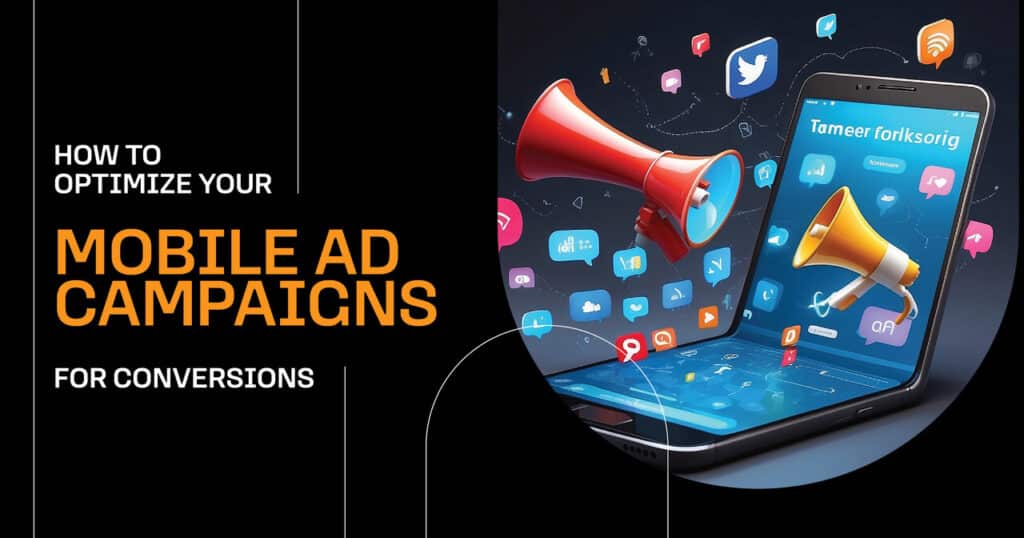Mobile ad campaigns are a crucial part of marketing strategies in the digital age. They offer a direct line to consumers increasingly using mobile devices.
However, creating a successful mobile ad campaign is about more than just reaching a large audience. It’s about reaching the right audience and inspiring them to take action.
This is where mobile ad campaign optimization comes into play. It involves fine-tuning your ad strategies to improve performance and increase conversions.
This guide will explore the best practices for mobile ad campaign optimization, from understanding the mobile user experience to leveraging data analytics for campaign insights.
Whether you’re a seasoned marketer or a small business owner, this guide will provide you with actionable strategies to optimize your mobile ad campaigns.
Understanding Mobile User Experience for Ad Optimization
The initial step in optimizing your mobile ad campaigns is comprehending the user experience. Mobile users engage with content in distinct ways compared to desktop users.
They often have shorter attention spans and are more likely to be multitasking. Your ads must be concise, engaging, and easy to interact with.
Understanding the mobile user experience also involves considering the technical aspects. This includes factors like load times, screen size, and device compatibility.
Optimizing your ads for the mobile user experience can enhance engagement and boost conversion rates.
Crafting Compelling Ad Creatives and Copy
Creating compelling ad creatives and copy is crucial for mobile ad campaign optimization. Your ad creative is the first thing a user sees, so it needs to grab their attention and make them want to learn more.
Your ad copy, on the other hand, is what convinces the user to take action. It should be clear, concise, and compelling. It should communicate the value of your offer and what the user will gain by clicking on your ad.
Remember, mobile users are often on the go. They need more time to read long, complex ad copy. Keep it short, simple, and to the point.
The Role of A/B Testing in Creative Optimization
A/B testing is essential for improving your ad content. It involves creating and testing two versions of your ad to see which works better. This helps you determine which parts of your ad are practical and which need to be revised. You can try different headlines, images, and calls to action. Testing and enhancing your ads regularly can increase the number of people who take action after seeing your ads, like making a purchase or signing up for something. This means you’ll get more out of your advertising money.
Leveraging Data Analytics for Campaign Insights
Data analytics is a powerful tool for mobile ad campaign optimization. It helps you understand how well your ads are performing and identifies areas for improvement.
Analytics can track key metrics like click-through, conversion, and acquisition costs. This data can aid you in identifying trends, spotting issues, and making informed decisions about your ad strategy.
Remember, the goal is to collect and use data to drive action. Use your analytics to test new ideas, optimize ads, and enhance overall campaign performance.
Setting Clear Campaign Goals and KPIs
Establishing precise campaign objectives and key performance indicators (KPIs) is crucial for optimizing mobile ad campaigns. Your goals should adhere to the SMART criteria: specific, measurable, achievable, relevant, and time-bound. KPIs, such as conversion rate, cost per click, or return on ad spend, serve as benchmarks for gauging your progress toward your objectives. By defining clear objectives and KPIs, you can ensure your ad campaign remains targeted and outcome-oriented. This clarity enables you to pinpoint your goals and effectively measure your achievements.
Segmenting Your Audience for Better Relevance
Audience segmentation is a potent tactic for enhancing the effectiveness of your ads. It entails categorizing your audience into smaller segments based on location, behavior, or interests.
Segmenting your audience enables you to craft more tailored and specific ads. This personalization often results in increased engagement, improved conversion rates, and more reasonable ad budget allocation.
Mobile Landing Page Optimization
The mobile landing page your ad directs users to plays a vital role in the conversion journey. Your landing page’s design and content significantly influence your conversion rates. It should be visually captivating, user-friendly, and offer precise, compelling details about your proposition.
Improving Load Times and User Interaction
Load times significantly affect user experience. A slow-loading page often results in high bounce rates and missed conversion opportunities.
Optimizing your landing page for speed can significantly improve user engagement and conversion rates. This can involve compressing images, minimizing code, and using a content delivery network (CDN).
User interaction is another crucial aspect. Your landing page should be designed for easy navigation and interaction on mobile devices. This includes having clear and easy-to-click call-to-action buttons and ensuring all content is easily readable on small screens.
Ad Placement and Bid Management
Ad placement is a critical factor in mobile ad campaign optimization. It refers to where your ads appear on a webpage or within an app.
Strategic ad placement can significantly increase visibility and engagement. It’s essential to test different placements and analyze their performance.
Bid management is another crucial aspect. It involves setting and adjusting your bids to maximize your return on ad spend. This requires careful monitoring and analysis of your campaign performance.
Utilizing AI for Automated Optimization
Artificial Intelligence (AI) is increasingly used in mobile ad campaign optimization. It can automate many aspects of the process, saving time and improving efficiency.
AI possesses the ability to analyze extensive datasets to recognize patterns and trends.
It can then use this information to make informed decisions about ad placement, bid management, and other aspects of campaign optimization. This can lead to more effective and efficient campaigns.
Measuring and Optimizing Return on Ad Spend (ROAS)
Return on Ad Spend (ROAS) is an essential metric for optimizing mobile ad campaigns. It tells you how much revenue you make for every dollar you invest in advertising.
Optimizing for ROAS means maximizing the revenue generated from your ad spend. This involves continuously monitoring and adjusting your campaigns based on performance data.
Remembering that a high ROAS sometimes means a successful campaign is essential. It would help to consider factors like customer lifetime value and overall profitability.
Understanding Pricing Models: CPM, CPC, and CPA
There are three main pricing models in mobile advertising: Cost Per Mile (CPM), Cost Per Click (CPC), and Cost Per Acquisition (CPA).
- CPM is based on impressions, charging you for the times your ad is displayed.
- CPC charges you each time someone clicks on your ad.
- CPA charges you when a user completes a desired action, such as purchasing or filling out a form.
Understanding these pricing models is crucial for effective budget management and campaign optimization. Each pricing model has pros and cons, and the best one for you depends on your specific campaign goals and key performance indicators (KPIs).
Continuous Learning and Adapting to Mobile Ad Trends
The mobile advertising landscape is constantly evolving. New technologies, user behaviors, and industry trends can significantly impact your campaign performance.
Staying updated with these changes is essential for effective mobile ad campaign optimization. Reading industry reports, attending webinars, and participating in online platforms can help you stay ahead of the game.
Case Studies: Successful Mobile Ad Campaign Optimizations
Case studies offer valuable insights into successful mobile ad campaign optimizations. They provide real-world examples of how businesses have improved ad performance through strategic optimization.
For instance, a case study might detail how a company used A/B testing to identify the most effective ad creatives. It also explains how a business uses data analytics to refine its targeting strategy and boost conversions.
While case studies can provide helpful guidance, tailoring these strategies to your unique business needs and goals is essential. What works for one company may only work for one company.
Conclusion and Next Steps
Optimizing your mobile ad campaigns is a continuous process that requires strategic planning, data-driven decision-making, and constant learning. Begin implementing these strategies today to enhance your ad performance, increase conversions, and optimize your return on ad spend.
Continuous testing, learning, and adapting are the keys to success.









